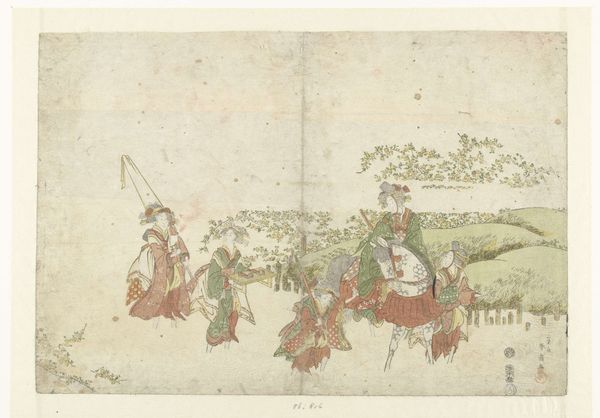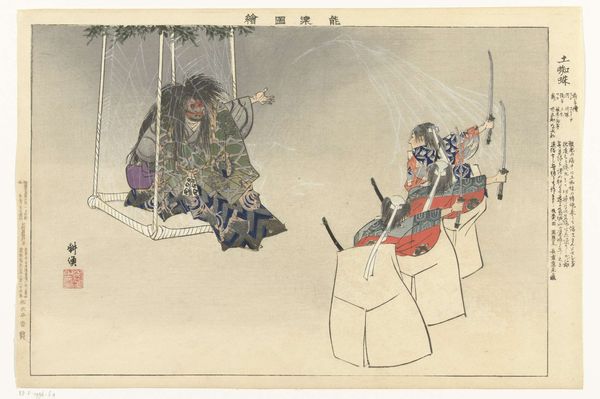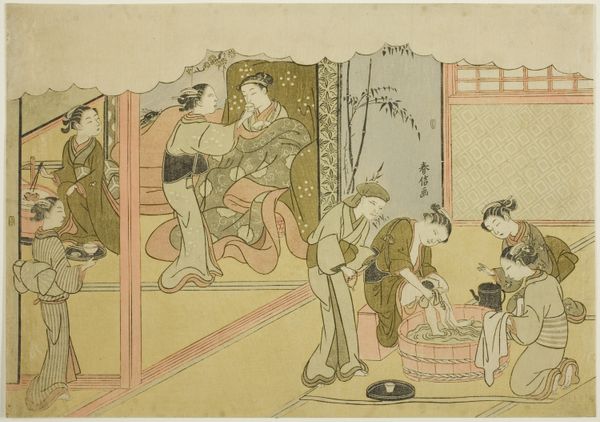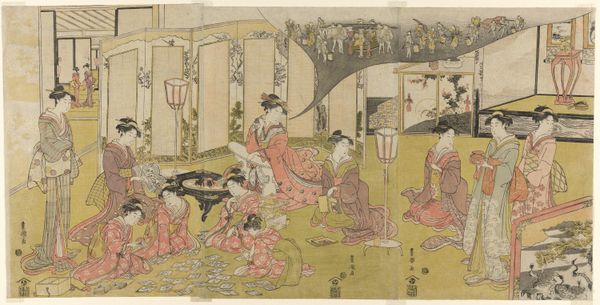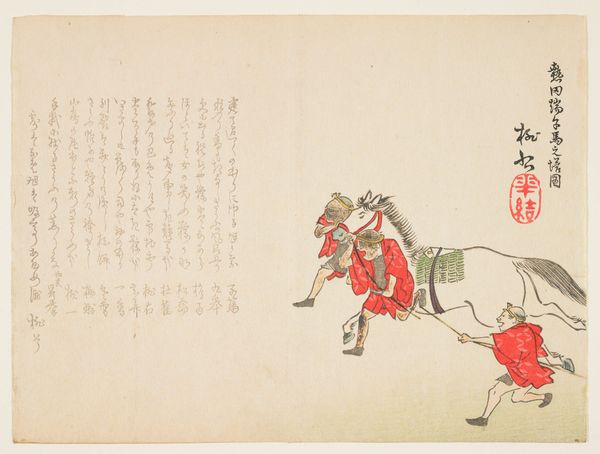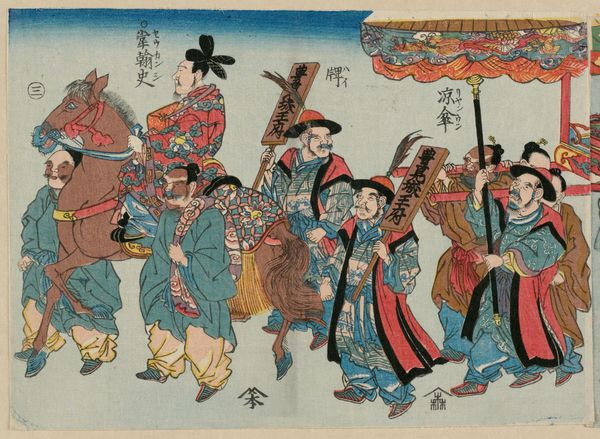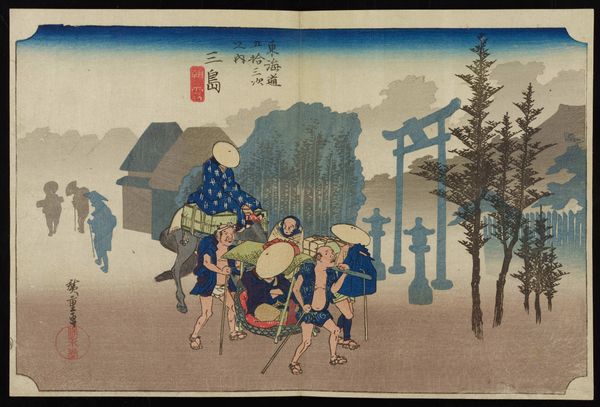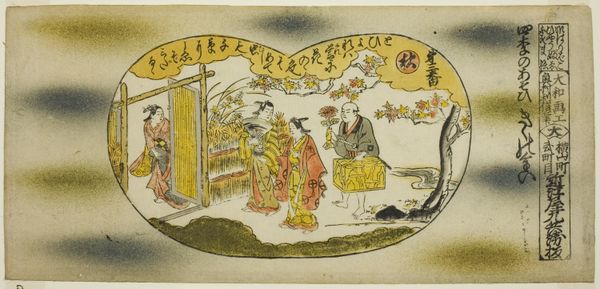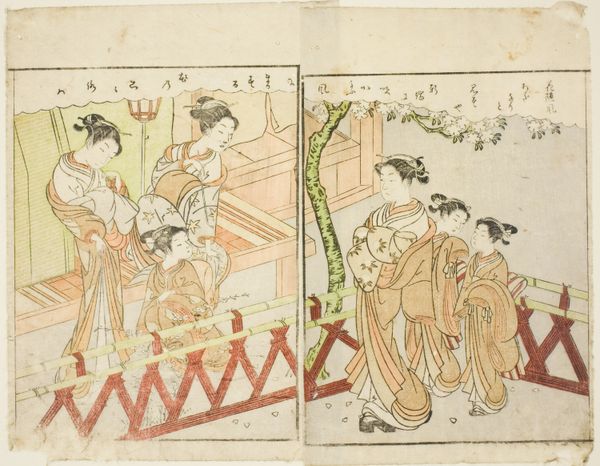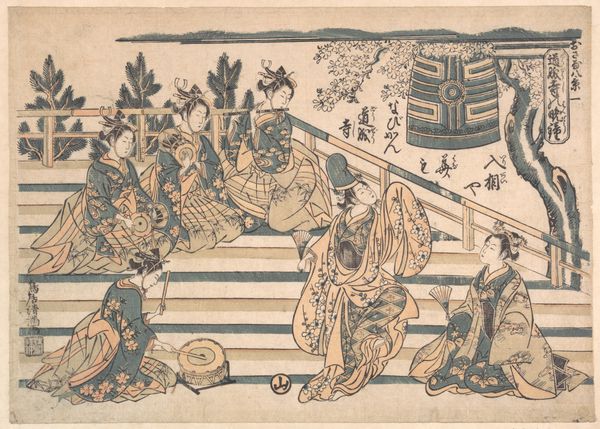
print, woodblock-print
#
narrative-art
# print
#
asian-art
#
ukiyo-e
#
figuration
#
woodblock-print
#
genre-painting
Copyright: Public domain
Editor: Here we have “Shrine Attendants Smoking,” a woodblock print by Toyota Hokkei. The scene feels rather informal, even a bit humorous. What strikes you most about this piece? Curator: What immediately grabs my attention is the sheer labor embedded in this print. Think of the process: carving the woodblocks, applying the inks, precisely layering colors. Each print is a testament to collaborative work and craft. How do you see this piece relating to, say, textiles or other so-called "lesser" arts of the period? Editor: That’s fascinating. I hadn't considered the amount of labor that went into this, especially since prints feel so... mass-produced in our modern context. Thinking about it as craft makes me appreciate the nuances more. I wonder, would this have been considered a disposable item, or something of value? Curator: Excellent question! Ukiyo-e prints were indeed more accessible and affordable compared to paintings. They were products of a thriving consumer culture, reflecting everyday life and popular entertainment. It's tempting to see them as simply disposable. But consider the skill involved and the vibrant colours; do you see any signs of wealth or commercial growth embedded in the print itself? Editor: Well, the detail in the clothing, the horse's saddle, maybe hints at some level of economic activity beyond mere survival. The act of leisure—smoking—suggests a certain societal surplus, doesn’t it? Curator: Precisely! We can understand the economics of Hokkei's Japan, simply from the materiality and labor evident in the image. What do you think about Ukiyo-e as a bridge between high art and everyday production, viewed this way? Editor: I appreciate this perspective because it shifts the focus from just aesthetics to production. Thanks, it really changes how I will consider art in the future.
Comments
No comments
Be the first to comment and join the conversation on the ultimate creative platform.
